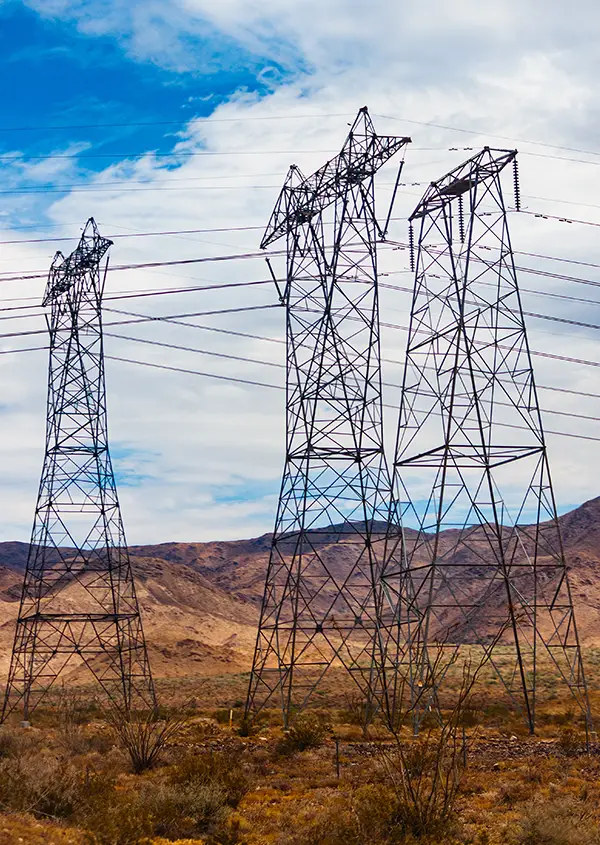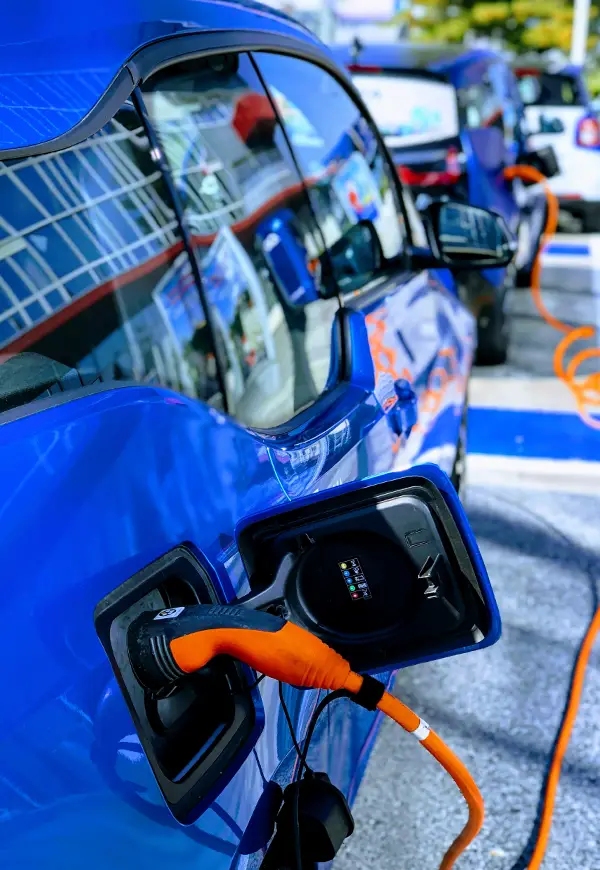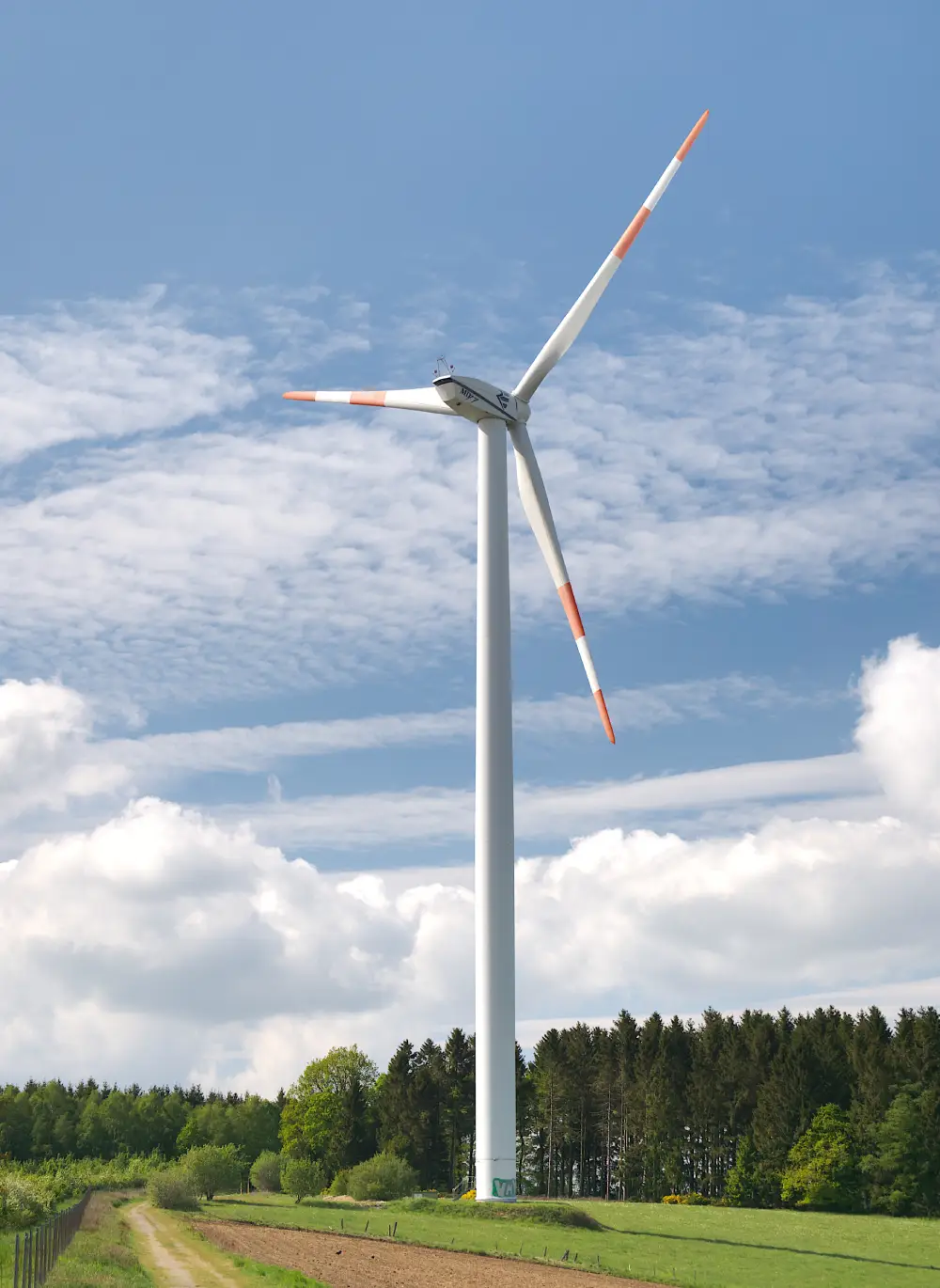The way people consume electricity is changing
With the rise of renewables, electric vehicles, and distributed generation, the energy landscape is evolving to support our modern lives.
But new solutions can exacerbate existing problems, like costly and inefficient spinning reserves, or bring on new ones altogether, like addressing the intermittency of renewables. We believe in technology’s ability to transform this critical infrastructure to accelerate grid modernization, with energy storage as a cornerstone of tomorrow’s electricity networks.
With the introduction of energy storage, we now have the technical capability to create resilient and self-healing networks that effectively interact with renewables, microgrids, mini-grids, and fully distributed generation. Energy storage also enables improved system utilization and right-sized investments to reduce system-level costs.
Transmission and Distribution
Transmission Capacity Release
Increase existing transmission capacity without having to build new lines
N-1 contingency planning and load flow analysis can reduce the operational capacity of certain transmission lines, which leads to overbuilding the transmission system and higher costs. Energy storage can automatically inject power to support grid stability during contingency events. This enables operators to increase the operational capacity of existing transmission lines, without having to build another tower or line. Energy storage can automatically inject power to support grid stability during contingency events. This enables operators to increase the operational capacity of existing transmission lines, without having to build another tower or line.
Network Peak Load Relief
Right-size your network investment to meet changing load growth patterns
Traditional poles-and-wires projects are major capital investments, traditionally oversized and underutilized initially, to accommodate load forecasts years into the future. In fact, the top 10% of peak demand typically occurs in less than 1% of the year and as a result, T&D assets are only ~55% utilized.
Energy storage systems enable investments to be scaled incrementally over time, delivering the right amount of load relief each year. When a new line is finally commissioned, existing energy storage arrays can be re-sited to support other load pockets as well.


Network Black Start
A secure and balanced restart of the network
The goal is to build networks that never go down. But if they do, energy storage can stand at the ready to restart critical generators, and power plants, or get the network back up as soon as possible after an outage. Furthermore, energy storage can serve as a fast-acting load resource to ensure supply and demand are managed in lockstep. This balancing capability ensures a stable network is maintained throughout the whole process.
Congestion Management
Sidestep line congestion with localized energy reserves
During peak demand, transmission and distribution capacity can become a bottleneck in the network, forcing system operators to dispatch expensive local generation. Sidestep congestion and inject power downstream of transmission constraints with energy storage. Energy storage can charge during off-peak hours and discharge to serve congested load pockets during times of peak demand.
Distribution System Reliability
Increase the operating efficiency of the system and improve stability during disturbances
The distribution network is increasingly taxed by new sources of load, such as electric vehicles, and distributed generation. Battery storage can absorb intermittent local generation and insulate the grid from sudden spikes in local load, easing the strain on distribution infrastructure.
Energy storage can manage reactive power output, typically concurrently and independently from real power. Such reactive power can be used to provide services that maintain grid voltage. This is a critical localized service that protects equipment, maintains power quality, and reduces transmission losses.
Frequency Response
Network response in an instant
System operators have relied on large, synchronized generators to provide inertia and frequency response to the network. It is embedded deep into the physics of running the network and isn’t missed until it is gone.
As renewable generation reduces the number of generators synchronized to the network, there is a real concern around network control and response. Fortunately, energy storage can provide frequency response for system reliability much more efficiently, at a lower cost, and with substantially reduced emissions than a thermal generation.

Renewable Integration
Grid Renewable Integration
Manage renewable variability without holding generators in reserve
Energy storage is the only shock absorber your network needs. Energy storage is the most responsive and flexible asset available that can neutralize the volatility caused by renewables in your network.
Energy storage has no minimal set point and is bidirectional—it can both deliver and absorb power from the network, acting as a buffer to the intermittency of renewables and eliminating the need for wasteful curtailment. Storage can be sited anywhere in the network as a DC Coupled or AC Coupled system to address renewables dispatchability everywhere in the network.
Storage + Renewables
Unlock the full potential of your renewables
Co-locating renewables with storage in the form of DC Coupled or AC Coupled lets you capture all the solar and wind power you generate and dispatch it when it’s needed. You are no longer forced to use it or lose it.
Energy storage also empowers your renewable generation to do more–control ramp rates, smooth power output, deliver firm capacity, and absorb power during periods of excess generation. These extra capabilities will give your project an advantage over other renewable-only projects trying to connect in the same area.

Microgrids and Islands

MICROGRIDS
Seamlessly connect and disconnect from the network
Energy storage enables you to island from the network as needed by instantaneously switching between grid power and your own reserves. Energy storage can store your local generation for dispatch when it’s needed.
Energy storage, when paired with local thermal or renewable generation, can smooth out variability, improve operation efficiency, and store excess power for use at a later time resulting in a more cost effective and resilient microgrid.
ISLAND DISPATCH OPTIMIZATION
Free yourself from the burden of having to run inefficient generation
In some areas of the world, diesel and fuel-oil generation seem like the only options available to meet energy needs. But these plants have significant drawbacks–the fuel is difficult to transport, they are expensive to run, and they create significant emissions and noise pollution. Using storage or storage + renewables changes that equation.
Energy storage reduces reliance on diesel and other liquid fuels by enabling renewables to be used for more hours of the day. Storage also enables diesel engines to run more efficiently and less often, therefore reducing overall reliance on diesel and other fuel oils and lowering the associated costs.
